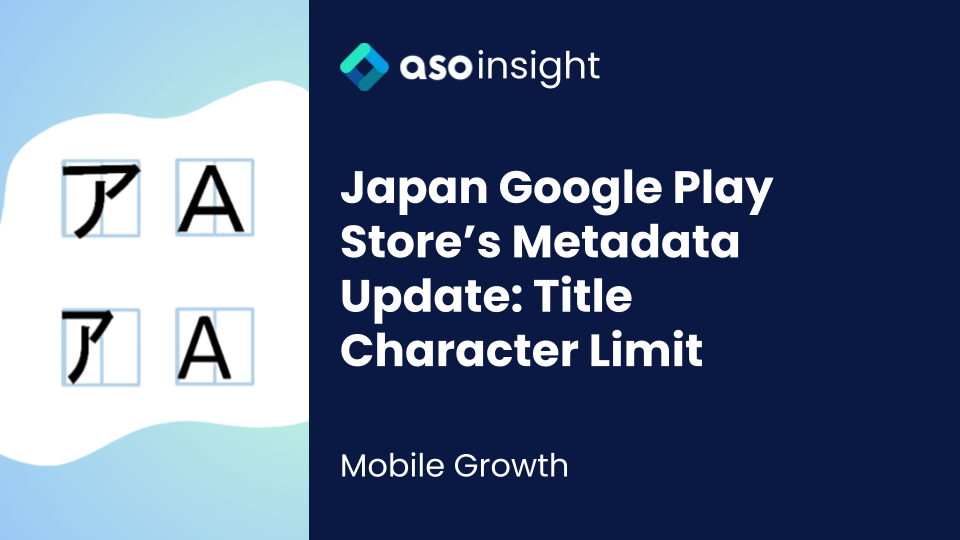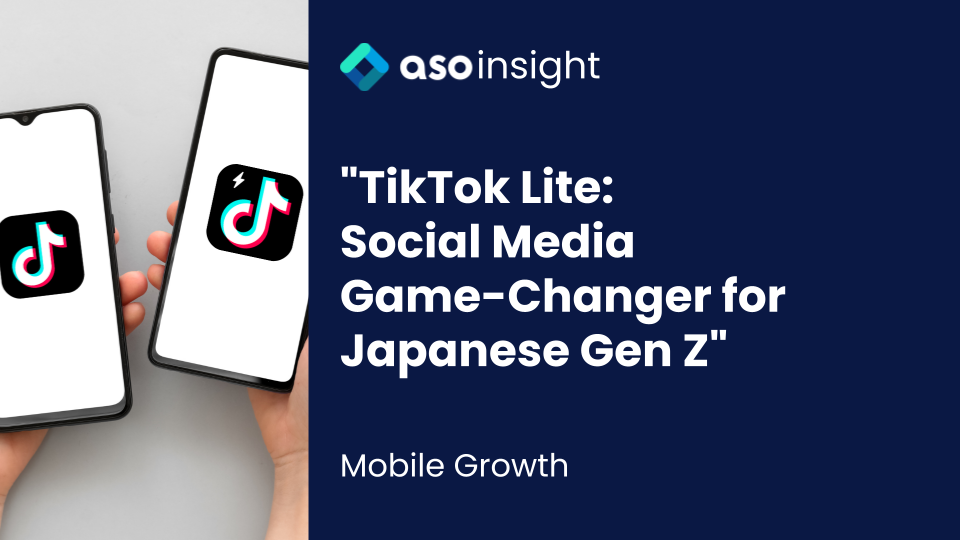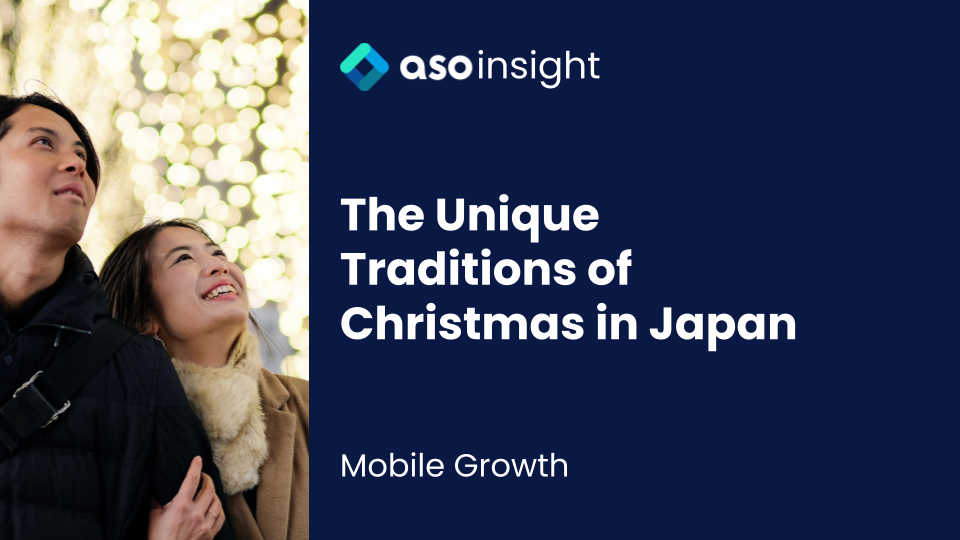Introduction
In the ever-evolving landscape of app optimization, even subtle changes can wield profound influence. The recent changes in the Japan Google Play Store’s metadata guidelines, reducing the permissible number of full-width characters, may appear minute, but it carries significant implications for App Store Optimization (ASO). In this article, we will decipher the recent metadata update, grasp the distinctions between half-width and full-width characters, and ultimately uncover how these shifts impact the intricate art of ASO in the Japanese app market.
Contents
Japan Google Play Store’s Metadata Update
The recent update to Japan’s Google Play Store Metadata includes a subtle yet significant change. Google Play Store Title metadata has undergone a policy shift regarding character limits. While the limit for half-width characters remains at 30 characters, it’s the full-width characters that have seen a notable adjustment. In the past, full-width characters had the same character count limit as half-width characters, but now, that limit has been halved and down to 15 full-width character limit.
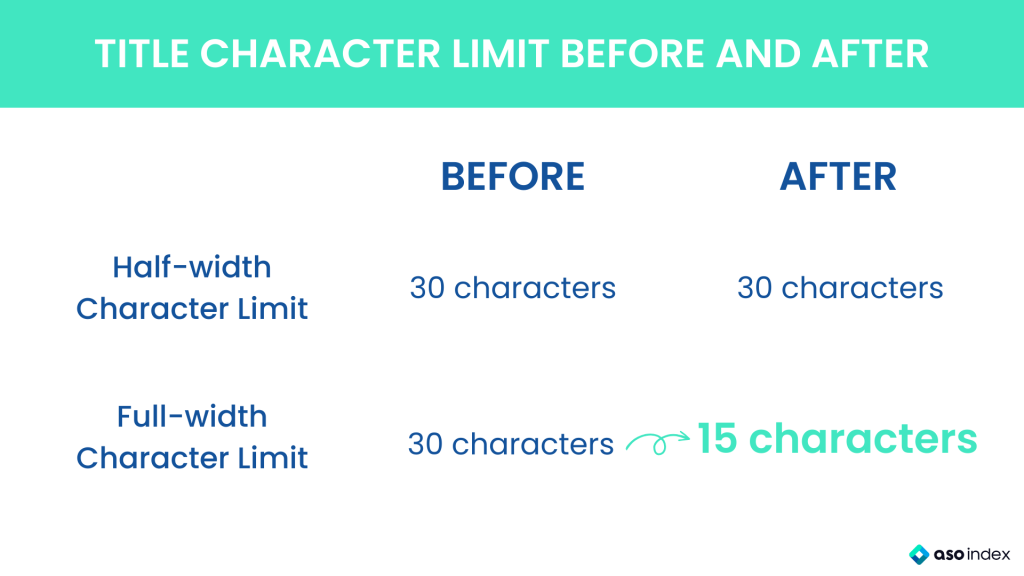
Understanding Half-width and Full-width Characters
When working with Japanese text, one encounters a unique aspect of typography and encoding that sets it apart from many other languages—half-width and full-width characters. Half-width and full-width characters may look slightly different, but they are recognized as completely different characters on a computer. Half-width characters are also called 1-byte characters, and full-width characters are also called 2-byte characters.
Half-width characters, as the name suggests, are characters that occupy half the width of full-width characters. They are essentially the same width as Latin characters, and are typically used for alphanumeric characters, punctuation marks, and some katakana characters.
Full-width characters, on the other hand, occupy the same space as two half-width characters. They are generally used for more complex characters in the Japanese writing system, such as kanji, hiragana, and certain katakana characters.
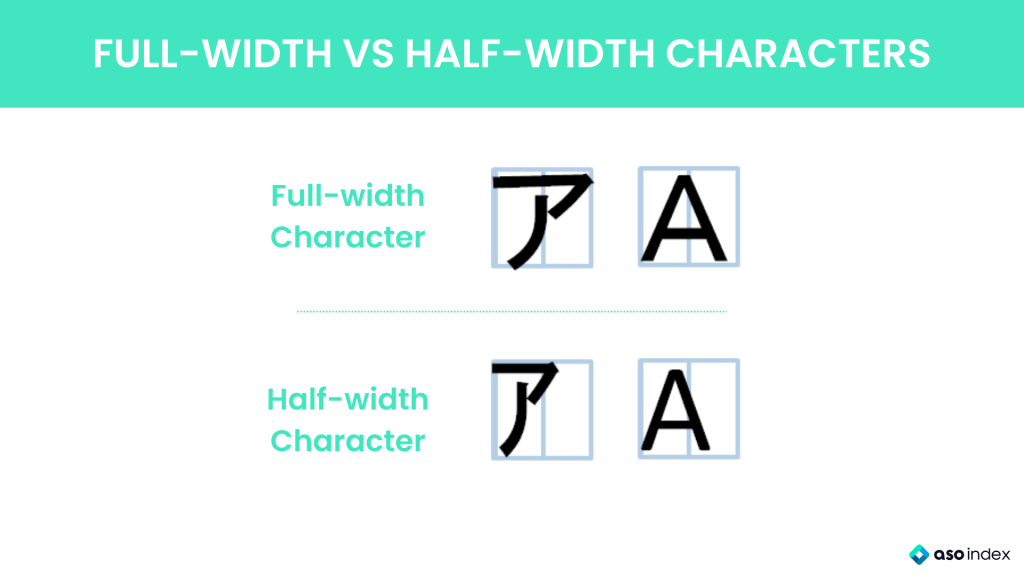
How does this affect ASO?
With the character limit for full-width characters reduced to half, developers and marketers must be more concise in their app titles. This means that conveying the essence of the app and its key features becomes more challenging. ASO experts need to carefully select and prioritize the most critical keywords and information to fit within the new character limits. Moreso, it is a must to focus on identifying the most relevant keywords that align with user search behavior. This requires thorough keyword research and analysis to ensure that the selected keywords maximize the app’s visibility.
For apps targeting Japanese users, localization is crucial. Adapting app titles and descriptions to comply with the new character limits while maintaining linguistic and cultural nuances becomes more complex. Localization experts need to be mindful of these restrictions. The change in character limits may also shift the competitive landscape. Apps that effectively adapt to the new regulations may have an advantage in search results. Understanding and staying ahead of competitors’ ASO strategies becomes paramount.
Conclusion
In summary, the reduction of character limits for full-width characters in Japan’s Google Play Store Title metadata necessitates a more strategic, concise, and creative approach to ASO. Developers and marketers must adapt to these changes by focusing on keyword optimization, localization, and ongoing monitoring to ensure their apps remain competitive and visible in the Japanese app market.


